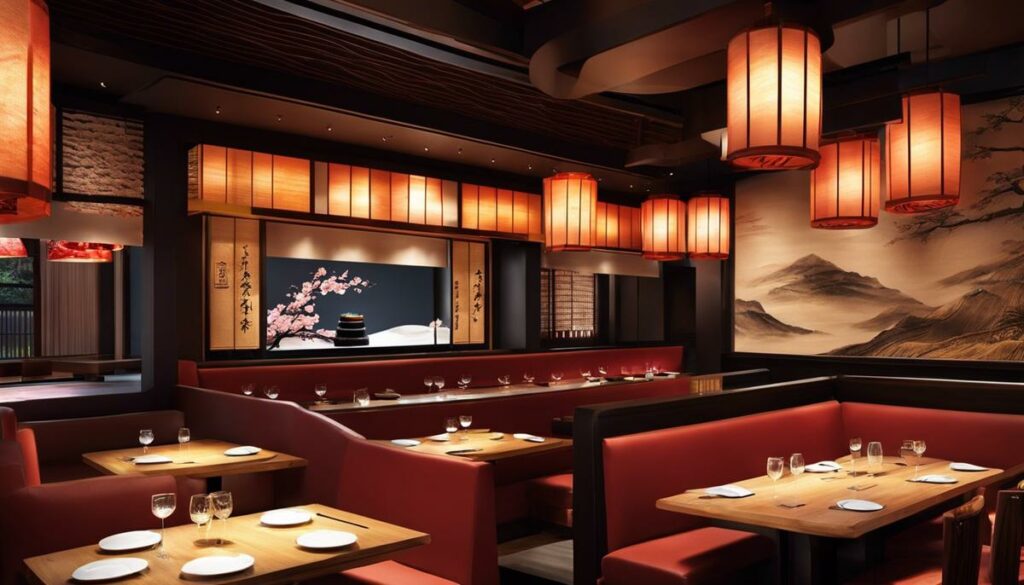In the fascinating world of gastronomy, sushi bars and restaurants represent a unique mix of tradition, aesthetics and innovation. They are not only places to enjoy Japan’s culinary heritage, but also spaces where creativity and design are paramount. Like an exciting fashion trend, the aspects that make these places special are constantly changing and renewing. From stunning designs and decorations that give a touch of Osaka or Tokyo, to the delicate and visually appealing food, to the fabulous customer service, they offer an experience that is as memorable as it is enjoyable.
Stunning design and décor
You wander the streets of a bustling city, look for a stylish restaurant to linger in, and come across a sushi bar – a unique paradigm of East Asian aesthetics in the middle of Western urbanity. But what makes the design and décor of sushi bars and restaurants so unique and memorable?
Discreet but distinctive. Fascinating every detail. Traditional Japanese interior design is known for its clean lines, minimalist shapes, and natural materials such as wood, bamboo, and stone. It conveys an aura of calm and balance, an escape from chaotic city life, into a world of aesthetic enjoyment and quiet contemplation.
The sushi itself is indispensable. Finely prepared and carefully presented, it not only offers a wonderful explosion of flavours, but also its own visual highlight. The professionals of sushi art pay great attention to the arrangement of individual pieces, colors and textures on the plate, which makes every bite truly sensual.
As far as lighting goes, sushi bars get a big plus. A well-lit ambience is essential to immerse the guest in another world. Dimmable, warm lighting creates an intimate and cozy atmosphere, while illuminated accents, such as an illuminated bar or ornate hanging lamps, draw attention to special areas.
In addition, there is the integration of Japanese art and culture. The arrangement of sake bottles, carefully selected and made mandatory to the décor, from traditional Japanese works of art to bonsai plants, give the room a personal and authentic touch.
And then there’s the prominent counter placement in the center of most sushi joints. It’s not just about food, it’s also about seeing and experiencing. The guest is taken on a culinary journey where they can watch the chefs artfully cut the ingredients and roll the perfect sushi.
Without a doubt, every element of the interior design of a sushi bar contributes to providing the guest with an unparalleled experience. It is the combination of function and beauty that creates uniqueness. Whether you’re a regular or a newcomer to sushi fever, the exceptional design and décor of these places will always leave a lasting impression. Because in the end, it’s not just the excellent food that counts, but also the ambience that surrounds it.
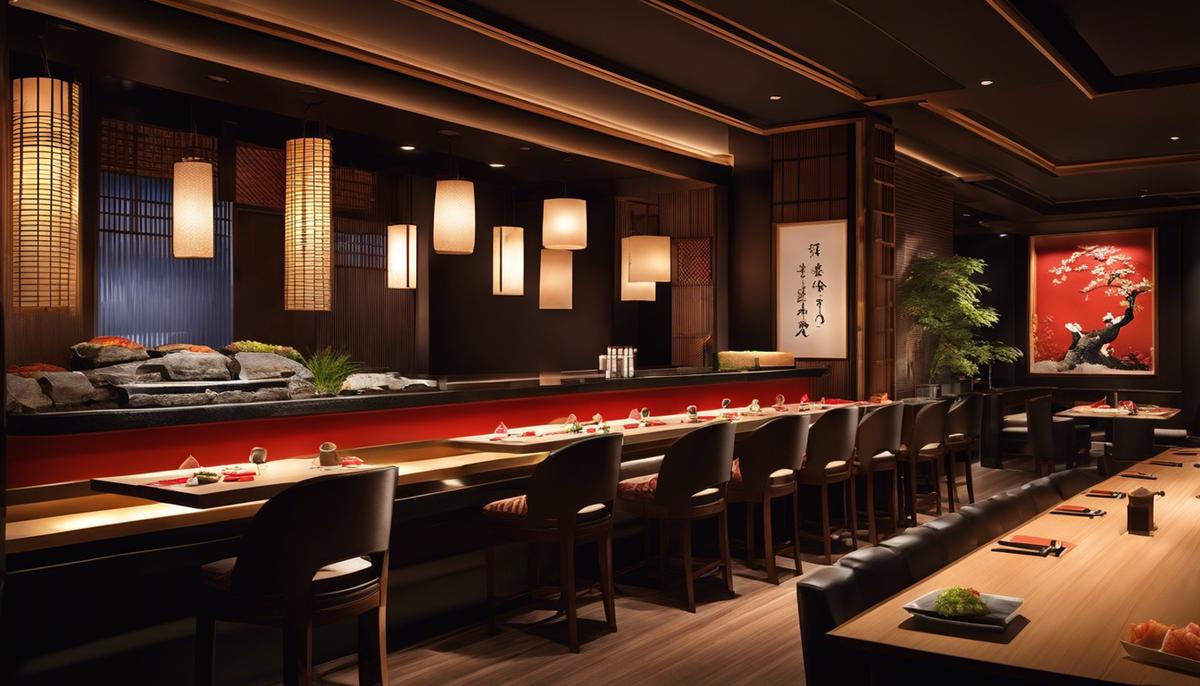
The presentation and aesthetics of the food
The Aesthetics of Sushi – The Key to Success
When you think of sushi, you don’t just think of the culinary delights of the Japanese delicacy, but also of the artistic presentation and the stylish ambience. The aesthetics of sushi play a crucial role in its appeal and popularity.
The incorporation of aesthetics begins with the craft of sushi making. The sushi master is both a craftsman and an artist, whose skill and passion are expressed in every detail. The harmony of colours, shapes and textures make each piece of sushi a small work of art. The arrangement of sushi on the plate often follows the rules of composition in the visual arts, creating a visual delight that perfectly complements the taste experience.
The sake tableware also provides the special style and atmosphere. With its restrained elegance and variety of shapes, it blends harmoniously into the overall picture and supports the enjoyment experience. The choice of tableware is no coincidence, but an expression of the style and personal touch of the sushi master.
A lot of emphasis is also placed on aesthetics around the culinary experience. Increasingly, stylish clothing and accessories for the waitress, from traditional kimonos to modern interpretations, complement the visual experience. It is important that it contributes to a harmonious overall presentation without distracting from the sushi itself.
The special atmosphere is also characterized by the musical accompaniment. Whether it’s traditional Japanese music or modern sounds, the choice of music is meant to extend the dining experience to an acoustic level, helping to create a relaxing yet refreshing atmosphere.
Finally, the architecture of the sushi restaurant is often another important aspect of aesthetic presentation. Whether it’s minimalist design or opulent furnishings, ambience plays a crucial role in the sushi experience. Because it’s not just about serving excellent food, it’s also about creating a place where the eye and mind are as pampered as the palate.
This interplay of craft, art and ambience is what makes sushi such a unique experience. It is essential to meet the high demands of guests and at the same time inspire new lovers of this Japanese art form. Because sushi isn’t just about the food – it’s a gastronomic journey for all the senses.
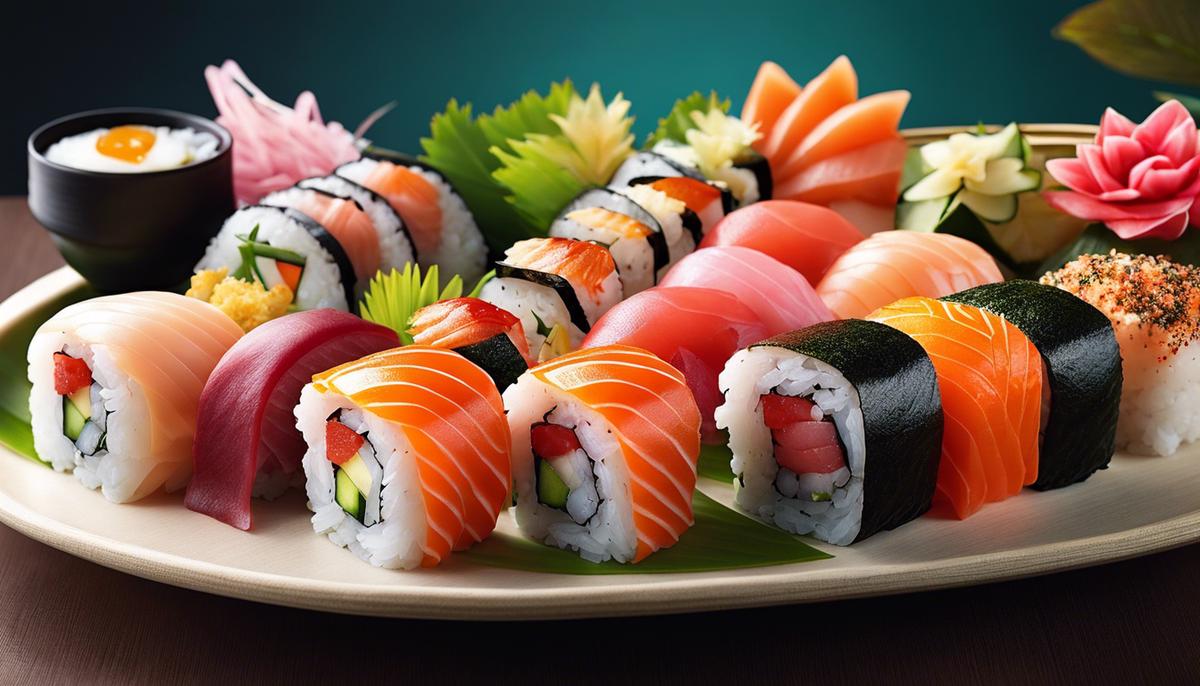
Service and customer experience
In food culture, so rich in history and tradition, sushi is thought of as an artful display of dishes where every detail counts. Much more than just food, it is symbolic of attention to detail and perfection. The sushi bars and restaurants have a distinct difference in terms of customer experience and service that goes far beyond the sushi rolls served.
The experience in a sushi bar is more direct and personal than in a restaurant. The sushi chef prepares the food right in front of the guests, which makes for a delightful spectacle, especially when sharp knives and fresh ingredients require skillful movements. The sushi chef’s interaction with guests is an integral part of the dining experience. You can observe the secrets of sushi-making and even learn direct tips and tricks from the master.
In the restaurant, on the other hand, sushi is usually prepared and served behind the scenes, resulting in a more intimate and potentially relaxing experience. Here, everything revolves around empathetic service and purist presentation. From the perfection of the placemat to the exact temperature of the sake, the attention to detail is striking.
In terms of aesthetics, both sushi bars and restaurants emphasize aspects such as harmony, balance and purity. This is evident in the careful selection and arrangement of ingredients, the artistic presentation of the rolls on the plate, and the overall cleanliness of the dining area. Every detail, no matter how small, plays a significant role, complementing the experience and serving the enjoyment – something that should not be underestimated.
Dealing with guests also varies between the two scenarios. The bar is all about a casual, conversational environment, while restaurants emphasize polite forms and discretion. In both cases, however, the focus is always on customer satisfaction.
There’s no denying that a visit to a sushi bar or restaurant offers an extraordinary experience that goes far beyond just eating sushi. It is a combination of aesthetics, tradition, creativity and impeccable service that ultimately determine the final result and leave a lasting impression. The key themes of harmony, elegance, variety and quality are always present, making the sushi experience a true journey for the senses.
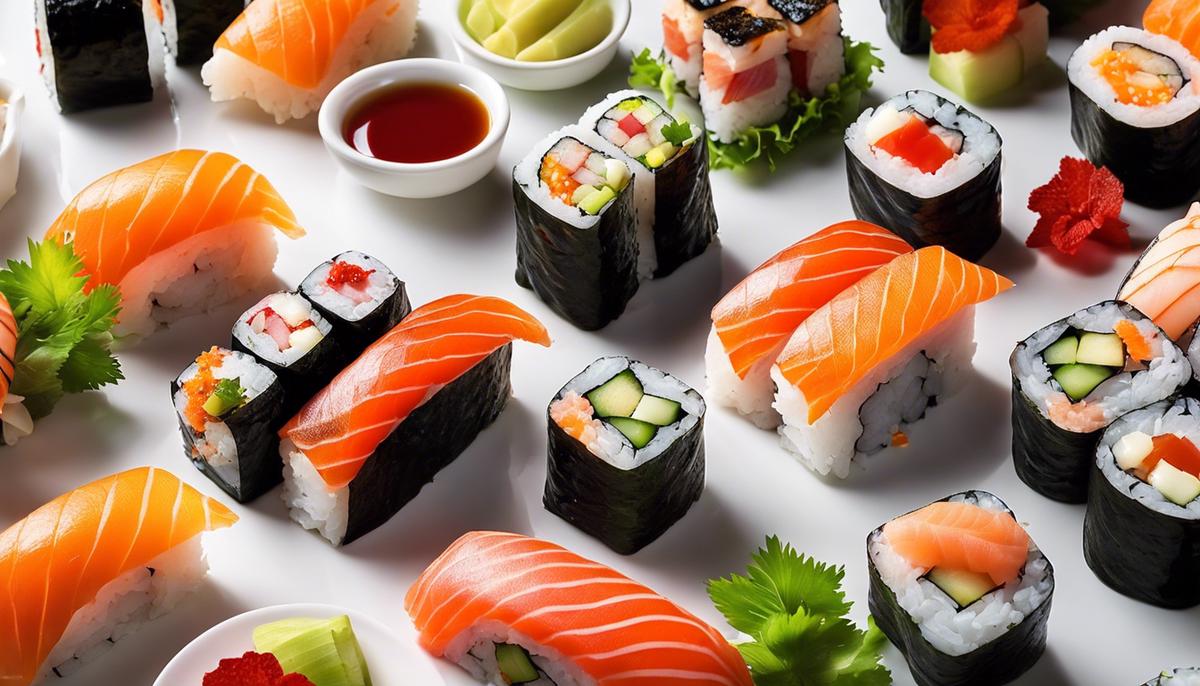
Authenticity and innovation of sushi cuisine
Innovation Meets Tradition: A Deep Dive into the World of Sushi Bars and Restaurants
In our increasingly globalized age, we are always looking for new impressions and experiences, especially when it comes to food. This is where the sushi bars and restaurants stand out, offering a mix of Japanese tradition and Western innovation.
The introduction of new ingredients and flavors into the traditional sushi menu is refreshing. Fusion cuisine is no stranger here and guests can be surprised by the creativity of the chefs: inside-out rolls with avocado and mango, tempura prawns stuffed maki or foie gras on sushi rice – the limits are only set by the imagination of the chefs. Through these creative interpretations of the classic sushi, sashimi and maki dishes, a connection between tradition and innovation is created.
Just as important as the culinary delights is the service in sushi bars and restaurants. Here, the focus is on an authentic, yet modern and relaxed host culture. In sushi bars, the guest is often greeted personally by the sushi master, who also proves his artistry on site. This creates a feeling of closeness and authenticity that leaves no room for distance. In the case of restaurants, however, this aspect is complemented by a professional and discreet service culture that allows guests to enjoy an exclusive and undisturbed meal.
The combination of tradition and innovation is also evident in the drink menus. In addition to traditional sake, you can also find various cocktails and long drinks, which are often peppered with Japanese ingredients and flavors. This selection makes it possible to design and refine your own sushi experience as you wish.
Here, too, digitalization should not be underestimated. From making reservations through online platforms to using social media for marketing purposes and customer engagement, sushi bars and restaurants are moving with the times and making it as easy and convenient as possible for their customers.
In short, good sushi today is no longer just about high-quality ingredients and craftsmanship. It’s more about the overall experience: a balanced mix of traditional and modern elements, creative interpretations, a harmonious atmosphere and professional service. It’s the details that shape the sushi experience and make it special – a game of the senses that bridges the gap between tradition and innovation.
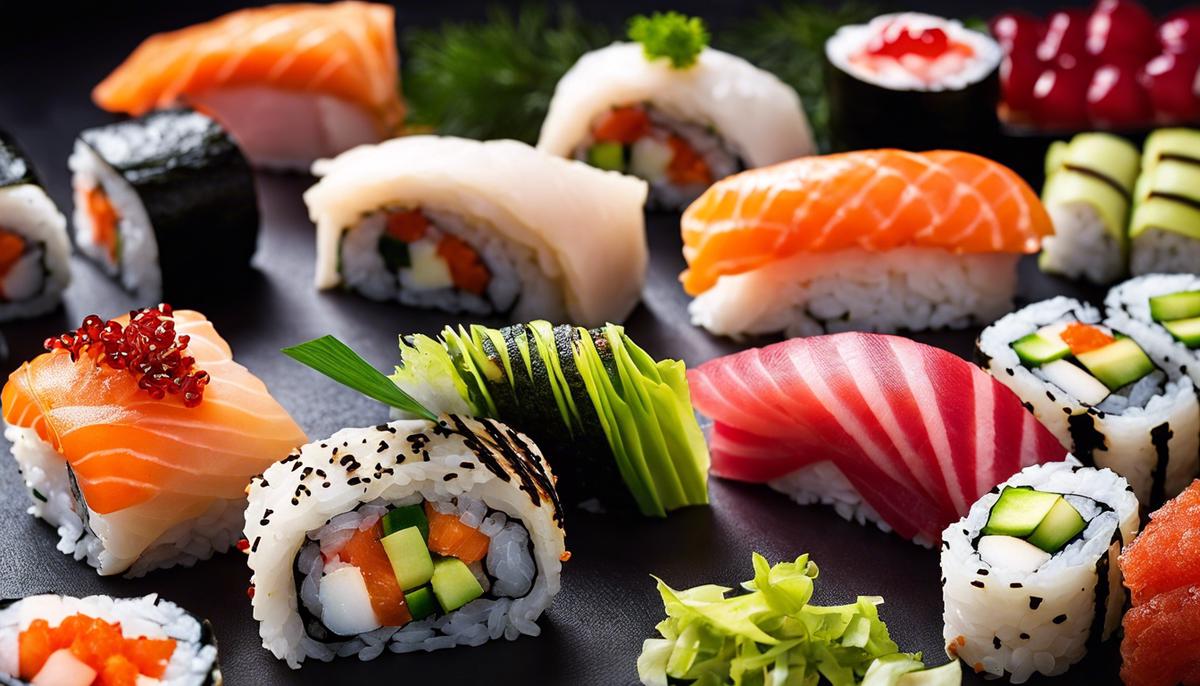
Influence of social media and online reviews
In today’s digital landscape, the online presence of sushi bars and restaurants plays a central role.
Social media and online reviews have revolutionized the way we eat, communicate, and seek out new experiences.
The sophisticated marriage of tradition and innovation in sushi cuisine is increasingly presented and shared on social media platforms, creating new gourmet experiences and reaching a wider audience.
The use of digital platforms allows sushi bars and restaurants to showcase their latest creations, cultivate their brand image, and interact with their community.
Social media and online reviews provide a rich source of customer feedback and provide valuable insights into guests’ preferences and expectations.
Fusion cuisine and the introduction of new ingredients and flavors in traditional sushi menus reflect the creativity and innovation in sushi cuisine.
These artistic interpretations are often showcased on social media, catalyzing discussions and interactions among foodies and sushi lovers.
Not only do customer reviews provide valuable insights to potential customers, but they can also provide valuable feedback and ideas to the restaurants themselves.
Reviews can indicate the quality of the dishes, the service, the atmosphere, and even the music.
All aspects of the experience are used to interact with the brand and build customer relationships.
The role of service and the balance between authenticity and modernity play an important role in this process.
Fusion tradition and innovation, from the menu to the interior, attracts a wide audience – from sushi newbies to long-time lovers.
Sushi bars and restaurants now offer a variety of drinks, including traditional sake and cocktails made with Japanese ingredients.
These are often part of the social media presentation and add to the overall experience.
In conclusion, digital presence is essential to the popularity of sushi bars and restaurants.
Online reviews and social media provide a platform for exchange and feedback, allowing these entities to create a strong brand image focused on service, quality and innovation.
In the digital age, it’s no longer just about the food alone – sushi is a combination of aesthetic pleasure, tradition, creativity and service.
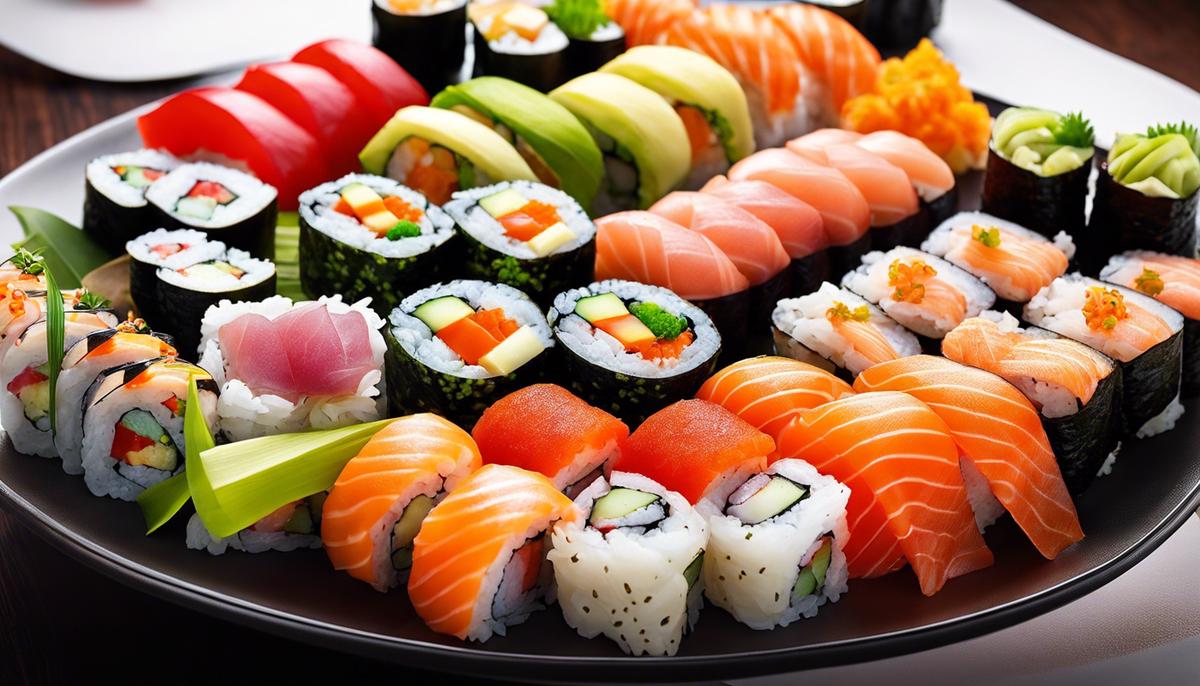
It’s no exaggeration to say that sushi bars and restaurants are more than just places to eat. They are an overall experience that captivates our senses and allows us to gain an in-depth understanding of Japanese culture. In doing so, they skilfully use both authentic traditions and modern innovations and thus manage to fascinate and impress generations of sushi lovers. They live and breathe in the exciting intersection of past and future, just like the world of fashion, and are fashion icons of the culinary field in their own way. In addition, they play a crucial role in the digital world, where social media and online reviews have a profound impact on their success. Therefore, sushi bars and restaurants always remain areas that arouse our interest and that we continue to explore with enthusiasm.
